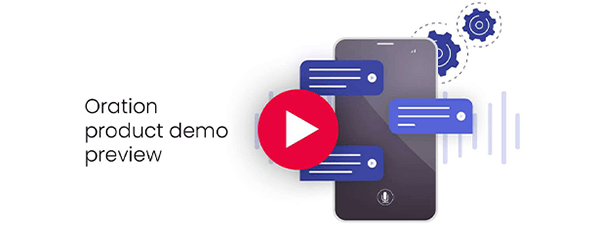Contact centres have been around for decades – at least in some form – ever since the inception of Automatic Call Distributor technology (ACD). First used in the 1950s and becoming more popular throughout the 1960s, ACD is the term used to describe telephony devices that could answer and distribute calls to specific agents based on a customer’s menu selection, telephone number, or even the time of day the call was being processed.
Over the years, as more consumers transact and interact with brands outside the ‘bricks and mortar’ environment for greater speed and convenience, the demands on contact centres skyrocketed. Today, contact centres have become integral to the running and success of organisations, facilitating a huge variety of functions from sales and technical support to general customer support and complaints handling.
Since the very first ACD devices were used decades ago, contact centres have faced mounting pressures to do more for increasing volumes of callers. But herein lies the conundrum. While traditional contact centres relied on manpower to resolve queries from start to finish, simply expanding the number of agents to take care of more calls is neither a sustainable nor cost-effective solution. This is why too many consumers in past years have developed a dislike for the call centre experience which has traditionally been characterised as waiting in lengthy call queues and being passed from one agent to another in the quest to find the right resolution.
Contact centre technology, rather than increasing headcount, has taken centre stage in overcoming the challenges faced by contact centres when it comes to meeting customers’ expectations and maintaining operational efficiency. Having evolved a long way beyond offices filled with phones attached to the same business number, here’s an overview of what modern contact centre technology looks like and how it’s applied in today’s environment.
How contact centre technology is applied
Contact centre technology includes all the different technical components that work together to steer consumers through to the best outcome when they connect with an organisation. Importantly, the development and implementation of contact centre technology is nearly always driven by the need to deliver better customer experiences as well as improving operational efficiency within the contact centre itself.
Most contact centre technologies used today focus on two main objectives: offering faster and more convenient resolutions to customers while reducing agents time on the phone or even the number of calls reaching agents in the first place - a win for everyone. So, what are some of these technical components and how do they work to achieve better outcomes for contact centres and their customers?
Contact Centre as a Service (CCaaS)
Some of the biggest organisations have historically invested heavily in contact centre technology infrastructure – building their own systems and capabilities in house to enhance the customer experience and improve efficiency. The problem with this approach is that while the costs of developing advanced in-house systems can be out of reach for smaller companies, even the largest players find themselves ‘chasing their tail’, spending vast amounts of money trying to keep up with evolving technologies and changing consumer expectations, but still not quite moving fast enough to capitalise on their investments.
Enabled by the cloud, Contact Centre as a Service (CCaaS) has changed the game because it gives companies immediate access to the latest contact centre tools which can be configured for different companies and industries. With the costs of implementing CCaaS typically proportional to business size and call volume, even the smallest start-up companies can benefit from advanced contact centre solutions, such as AI-powered call routing, while it also guarantees your CCaaS tools will always be up to date without investing in ongoing IT development.
Better still, the intuitive platforms which support CCaaS tools means contact centre managers themselves can easily make tweaks and changes to the customer experience or day-to-day operations without initiating costly IT projects.
Importantly, CCaaS is easily integrated with other business systems. For example, cloud-based call routing software can overlay your existing IT infrastructure, instantly bringing in new capabilities without engaging in costly IT development or experiencing business disruption. Integration with other platforms such as CRMs, can also help to reduce the amount of time agents spend on the phone by giving them access to customer records as soon as they pick up a call.
Workforce Management (WFM) software
Making sure the right resources are in place at any given time is critical to the overall efficiency of a contact centre operation. WFM software makes the staff scheduling process easier and more accurate for contact centre managers by using historical data to forecast the number of agents needed to meet customer needs at different times of the day or week.
For example, if your call centre receives more tech support calls during weekdays, but increased volumes of sales-related calls during evenings and weekends, WFM software will identify these patterns, so the appropriate expert agents can be rostered for the right shifts. Meanwhile, call volume information helps to ensure contact centre managers never have too many or too few staff working at any given time.
Another key benefit of WFM software is that it offers real-time reporting around call volumes and the types of calls being received; this means contact centre managers can immediately adjust staffing levels across different teams in response to changing activities. WFM software can also be used to motivate staff by giving them transparency over their own performance, such as creating leaderboards for the number of calls received and average handling times across agents.
Artificial Intelligence (AI)
AI has helped contact centres vastly improve the customer experience by empowering them with automated human-like capabilities without the operational complexities and costs involved in hiring vast amounts of real people to do the work.
One of the biggest advantages of using AI in contact centres is eliminating the need for callers to make call routing decisions themselves, as they would if faced with a menu of options when making a call. With AI, calls can be automatically answered with a conversational greeting and open question - “how can we help you?” - before being routed to the right resolution based on a customer’s natural language response.
With the ability to answer calls and understand a customer’s true reason for making a call without real human input, AI helps contact centres contain more calls entirely within the IVR. In other words, this means automatically resolving calls by directing customers to self-serve options, other digital channels offering the required information, or by playing targeted banners which have been configured to address common call types.
Needless to say, AI makes the contact centre experience more convenient for some customers who are able to get the information or answers they need right around the clock, seven days a week. All kinds of businesses, from the smallest bootstrapped start-ups to the largest enterprises, can benefit from these virtual receptionist capabilities, meaning they don’t have to rely on having real staff to answer and handle every call.
Omnichannel journey mapping
Customers have so much choice when it comes to deciding how they engage and interact with your business. While some customers might choose to send your contact centre an email to raise their queries or issues, others might prefer to reach out via social media or instant messaging – and of course, the phone will always be a popular option.
Contact centres that are equipped with omnichannel capabilities can track and take a birdseye view of their customers’ journeys and interactions wherever they are. In an omnichannel environment, every channel of communication is integrated, so historical customer information (including any web pages they might have visited and past interactions) can be viewed by agents handling queries. Crucially, information from each interaction is always recorded and accessible, so conversations can move efficiently between channels and agents are always up to date.
Omnichannel environments are very different to multichannel, which is where different channels are available but are not integrated. Without integration, agents aren’t as well equipped with information that might help them handle interactions more efficiently, while customers who find themselves repeating information they’ve already provided elsewhere, don’t have a positive customer experience.
Analytics
The earliest ACD technologies mentioned earlier, although once considered ground-breaking in the field of telephony systems, performed a useful function but they didn’t do much to help contact centre managers improve the automatic call distribution process they were facilitating. It’s fair to say, they were pretty much set and forget, except for adjusting call flows based on more anecdotal information and observances.
Contact centre technology in the modern era however, makes sure nothing is wasted, recording and tracking the details of every call and outcome, so managers can continually improve the customer experience and efficiency of operations. With the right insights provided by contact centre analytics tools, contact centre managers can see how to serve their customers more efficiently by adjusting call flows, agent resources, and identifying new opportunities to set up targeted banners of self-serve options for common call types.
Security
With technology enabling more ways in which customers can self-serve, such as making payments, checking account balances, or cancelling or setting up new orders and subscriptions, security technology is becoming increasingly critical in contact centres. For example, verifying the identity of customers through voice biometrics or automatically sending a pin number to a caller via SMS are two ways in which security technologies are being used in contact centres to help customers perform increasingly complex tasks without an agent.

The top benefits of contact centre technology
Boosting productivity
Essentially, contact centre technology is designed with the objective of helping contact centres do more with less. From lowering average handling times to reducing the number of calls reaching agents, the right combination of technologies can enable a contact centre to successfully serve more customers to a high standard, while lowering the costs of operating.
Better customer experience
Whether it’s ensuring all customers reach the right agents first time by using AI-powered speech recognition when routing calls or tweaking call flows based on reporting and analytics, contact centre technologies can create a more reliable and consistently positive customer experience across the board. Offering greater convenience across different customer demographics, technology in contact centres is also the key to allowing customers to interact with brands in all kinds of preferred ways, beyond the phone.
Specialisation and quality of service
With transparency over key performance metrics such as agents’ average handling times and even information from post-call surveys, contact centre technology helps managers to identify and address gaps in agent training, so they can more efficiently serve the needs of customers.
Detailed reporting and analytics around caller intent data over time also enables contact centres to create more specialised targeted banners or shape training programmes to develop the specific knowledge and expertise of agents.
Proactivity
Imagine a call routing solution that could not only identify the reason for a customer’s call from their natural verbal response but could also take a few tasks away from agents and prepare them for faster resolutions. After establishing the reason for a call, some contact centre technologies can automatically verify a caller’s identity, either by asking for unique details or through biometrics, or capture other relevant information (like a customer number) before sending it to agents’ screens before they pick up.
Find out more about the type of smart tech-driven tools and functions available to your contact centre through Oration by Convai.
Oration recognises the nuances of language through advanced speech recognition to apply an intent to every request, no matter how it's worded. How does the system become so clever? Through supervised learning that’s overseen by your contact centre manager. Just 15 minutes a day is all it takes to view your call log and check on the intents and actions assigned by the system. If something could have been better assigned, you can make the change so it will know better for next time. You’ll even be prompted to review other calls that the system has identified as similar in subject.
Watch this short video to see how easy it is to use Oration to better manage the conversations in your contact centre operations today.







